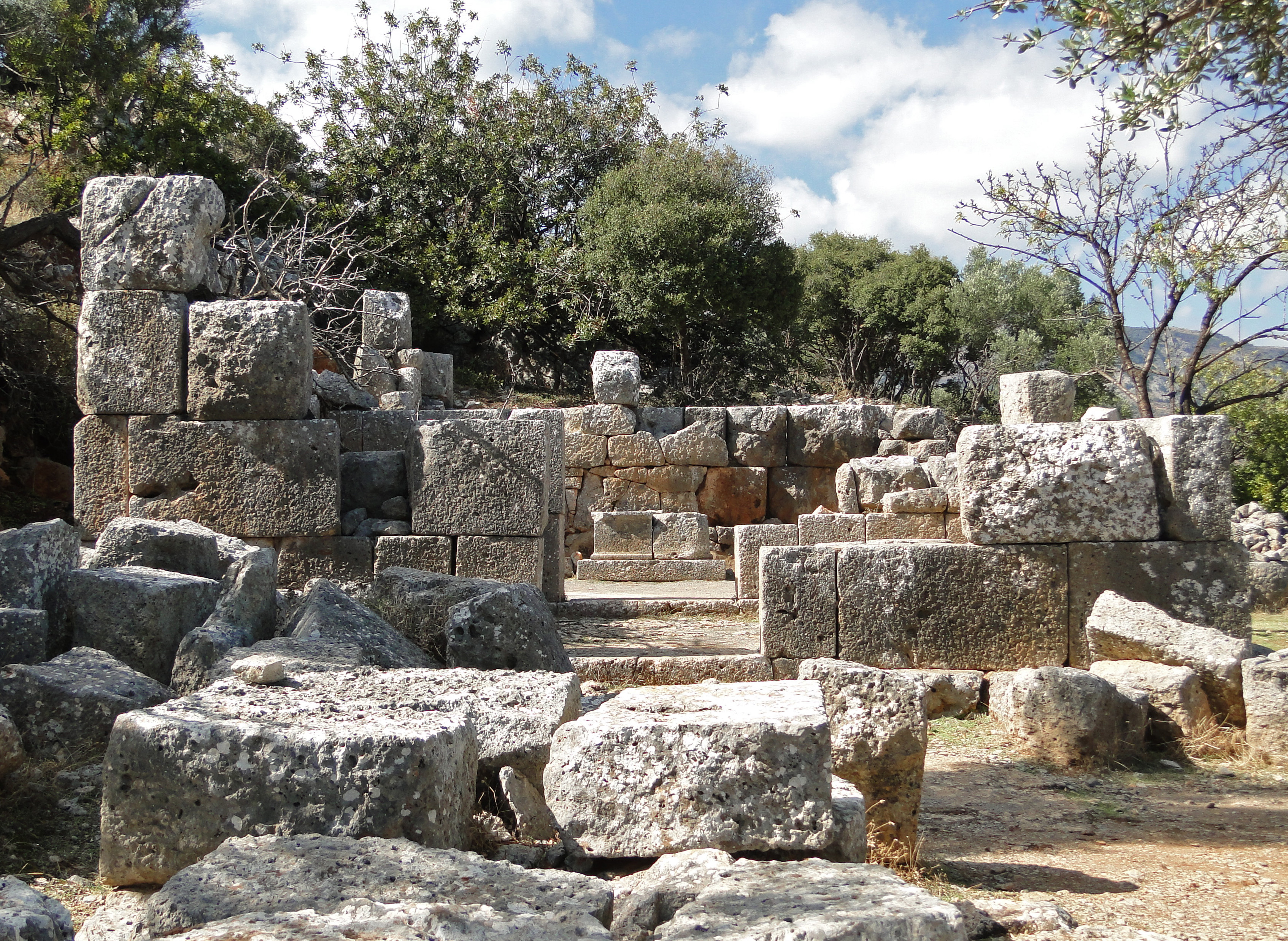Lato on:
[Wikipedia]
[Google]
[Amazon]
Lato ( grc, Λατώ, Latṓ) was an ancient city of

 The Dorian city-state was built in a defensible position overlooking Mirabello Bay between two peaks, both of which became
The Dorian city-state was built in a defensible position overlooking Mirabello Bay between two peaks, both of which became
Lato also minted coins in antiquity,
/ref> bearing the likeness of the goddess
Greek Ministry of CultureTourism website of the areaTourism website of the area
Geography of Crete Cretan city-states Ruins in Greece Populated places in ancient Crete Former populated places in Greece Ancient Greek archaeological sites in Crete {{AncientCrete-geo-stub
Crete
Crete ( el, Κρήτη, translit=, Modern: , Ancient: ) is the largest and most populous of the Greek islands, the 88th largest island in the world and the fifth largest island in the Mediterranean Sea, after Sicily, Sardinia, Cyprus, ...
, the ruins of which are located approximately 3 km from the village of Kritsa.
History

 The Dorian city-state was built in a defensible position overlooking Mirabello Bay between two peaks, both of which became
The Dorian city-state was built in a defensible position overlooking Mirabello Bay between two peaks, both of which became acropolis
An acropolis was the settlement of an upper part of an ancient Greek city, especially a citadel, and frequently a hill with precipitous sides, mainly chosen for purposes of defense. The term is typically used to refer to the Acropolis of Athens, ...
es to the city. Although the city probably predates the arrival of the Dorians
The Dorians (; el, Δωριεῖς, ''Dōrieîs'', singular , ''Dōrieús'') were one of the four major ethnic groups into which the Hellenes (or Greeks) of Classical Greece divided themselves (along with the Aeolians, Achaeans, and Ioni ...
, the ruins date mainly from the Dorian period (5th and 4th centuries BCE). The city was destroyed c. 200 BCE, but its port (Lato Etera or Lato pros Kamara), located near Agios Nikolaos was in use during Roman
Roman or Romans most often refers to:
* Rome, the capital city of Italy
* Ancient Rome, Roman civilization from 8th century BC to 5th century AD
*Roman people, the people of ancient Rome
*''Epistle to the Romans'', shortened to ''Romans'', a lett ...
rule. This has led to the confusion, repeated by Stephanus of Byzantium
Stephanus or Stephan of Byzantium ( la, Stephanus Byzantinus; grc-gre, Στέφανος Βυζάντιος, ''Stéphanos Byzántios''; centuryAD), was a Byzantine grammarian and the author of an important geographical dictionary entitled ''Ethn ...
quoting Xenion
''Xenion ignitum'' is a species of ground beetle in the family Carabidae. It is the sole species of the monotypic genus ''Xenion''.
Subspecies
These two subspecies belong to the species ''Xenion ignitum'':
* ''Xenion ignitum ignitum'' (Kraatz, 1 ...
, a Cretan historian, that Kamara and Lato were one and the same. Modern scholarship distinguishes the two.
The city most likely was named after the goddess Leto
In ancient Greek mythology and religion, Leto (; grc-gre, Λητώ , ''Lētṓ'', or , ''Lātṓ'' in Doric Greek) is a goddess and the mother of Apollo, the god of music, and Artemis, the goddess of the hunt.Hesiod, ''Theogony'404–409/ref> ...
(of which Lato is the usual Doric form) and may be mentioned in Linear B
Linear B was a syllabic script used for writing in Mycenaean Greek, the earliest attested form of Greek. The script predates the Greek alphabet by several centuries. The oldest Mycenaean writing dates to about 1400 BC. It is descended from ...
tablets as RA-TO.Greek Ministry of CultureLato also minted coins in antiquity,
/ref> bearing the likeness of the goddess
Eileithyia
Eileithyia or Ilithyiae or Ilithyia (; grc-gre, Εἰλείθυια; (''Eleuthyia'') in Crete, also (''Eleuthia'') or (''Elysia'') in Laconia and Messene, and (''Eleuthō'') in literature)Nilsson Vol I, p. 313 was the Greek goddess of ch ...
who appears to have been the one particularly worshipped at Lato.
Nearchus
Nearchus or Nearchos ( el, Νέαρχος; – 300 BC) was one of the Greek officers, a navarch, in the army of Alexander the Great. He is known for his celebrated expeditionary voyage starting from the Indus River, through the Persian Gulf and ...
, admiral of Alexander the Great
Alexander III of Macedon ( grc, Ἀλέξανδρος, Alexandros; 20/21 July 356 BC – 10/11 June 323 BC), commonly known as Alexander the Great, was a king of the ancient Greek kingdom of Macedon. He succeeded his father Philip II to ...
, was born at Lato.
In 1894–96, A. Evans conducted a small-scale investigation. Systematic excavation started in 1899–1901 by the French School of Archaeology, with J. Demargne, was resumed in 1968 by P. Ducrey, O. Picard, and B. Chatzimichali, and lasted until the 1970s.
See also
* Lato pros Kamara * MagasaReferences
Greek Ministry of Culture
Geography of Crete Cretan city-states Ruins in Greece Populated places in ancient Crete Former populated places in Greece Ancient Greek archaeological sites in Crete {{AncientCrete-geo-stub